LIFEBOATS
Latest works
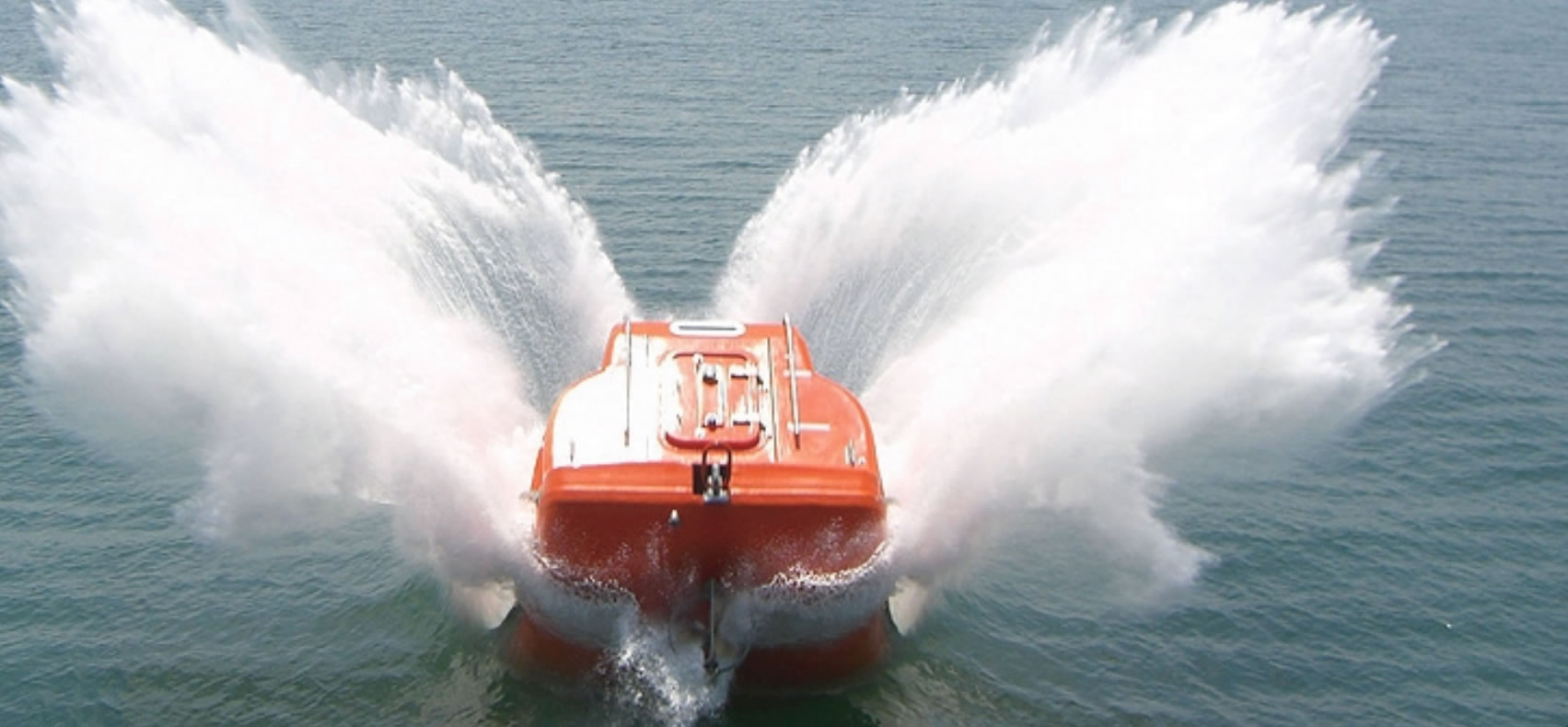
Freefall lifeboats
Introducing the first freefall lifeboats produced in Japan thanks to research and development undertaken jointly by players in industry, government, and academia. Our lifeboats can be dropped from a height of 30.5 meters, which places these lifeboats at the global forefront by this measure.
Freefall lifeboats
Nishi-F’s FF-72S model lifeboat exists thanks to the merging of our and Sekigahara Seisakusho’s water-launch system, an FRP project undertaken jointly with FRP Services & Company, and a slew of other forms of technical and human support. We will strive to increase the share of the market accounted for by our freefall lifeboats in part to express particular homage to those who encouraged and supported us during the course of five long years of research and development and to our teammates.
Nishi-F lineup of freefall lifeboats
| Boat type | Boat type | Capacity | Overall length (m) | Overall width (m) | Depth (m) | Drop height (m) |
|---|---|---|---|---|---|---|
| FF-72 | Fully enclosed type | 30 | 7.20 | 2.74 | 1.00 | 30.5 |
| FF-65 | Fully enclosed type | 25 | 6.48 | 2.47 | 0.90 | 25.0 |
Nishi-F lineup of rescue boat
| Boat type | Capacity | Overall length (m) | Overall width (m) |
|---|---|---|---|
| F-43 | 6 | 4.30 | 1.60 |
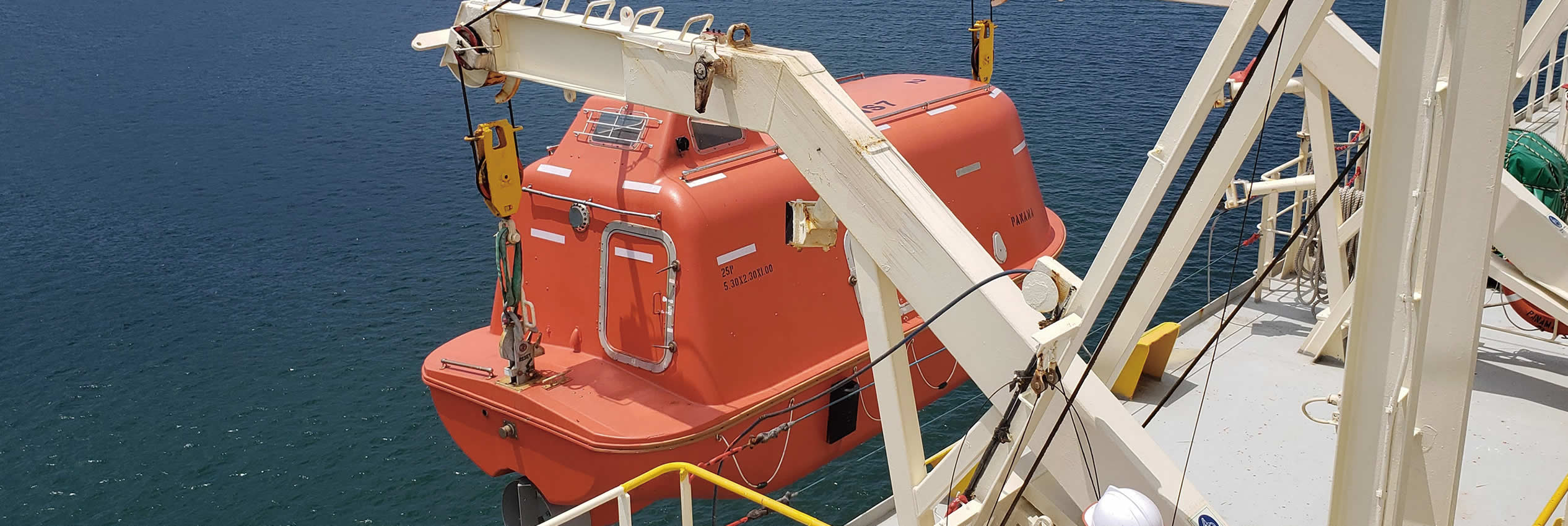
Gravity lifeboats
Our gravity lifeboats represent four decades of traditional technology inherited from the time of open boats.
A made-in-Japan ethos enables verification of safety performance in accordance with the latest version of SOLAS.
Gravity lifeboats
A gravity lifeboat is part of a launching system that uses a lifting cable and winch to lower the vessel into the water. All crewmembers can board a gravity lifeboat when it is in the stowed position and the engage in remote control operations from inside the lifeboat to launch and lower the lifeboat and have it splash down on the water.
Nishi-F lineup of gravity lifeboats
| Boat type | Boat type | Capacity | Overall length (m) | Overall width (m) | Depth (m) |
|---|---|---|---|---|---|
| DML-73 | Fully enclosed type | 50 | 7.46 | 2.86 | 1.00 |
| CML-21 | Fully enclosed type | 33 | 6.46 | 2.56 | 1.04 |
| DML-73S | Fireproof type | 50 | 7.46 | 2.86 | 1.00 |
| CML-21S | Fireproof type | 30 | 6.46 | 2.56 | 1.04 |
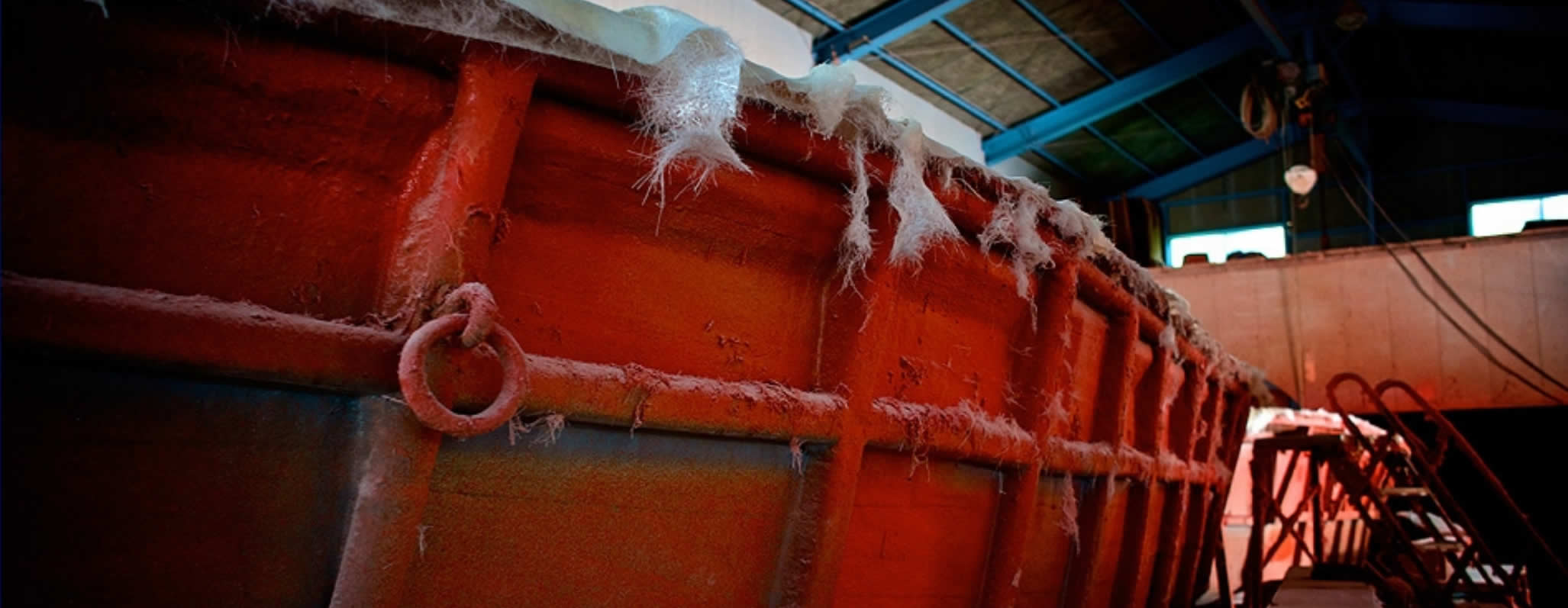
Manufacturing
We manufacture safe, high-performance, domestic lifeboats using the hand lay-up technique to meet the needs of clients who place a high priority on safety.
An approach to manufacturing that satisfies a global standard
The hand lay-up, spray-up, and infusion techniques continue to evolve with each passing day. What has remained a constant is the attitude concerning manufacturing that equates domestic production with safety. Indeed, why are products that are made in Japan selected?
The reason can be found in products made by Nishi-F. We comply with the rules of the IMO as well as the increasingly stringent safety requirements stipulated by clients with unequaled earnestness.
Repairs
Because of the implementation of MSC.1/Circ.1206, manufacturers are now required to conduct inspections of lifeboats and davits.
Developing and improving FRP technology
We accept requests to repair products that we have manufactured with love. We can learn more from products that have made their way back to us than from the process of building new ships. What parts of a ship are damaged and can be fixed now? Each repair action that we carry out is reflected in techniques that can be applied to vessels yet to be made.
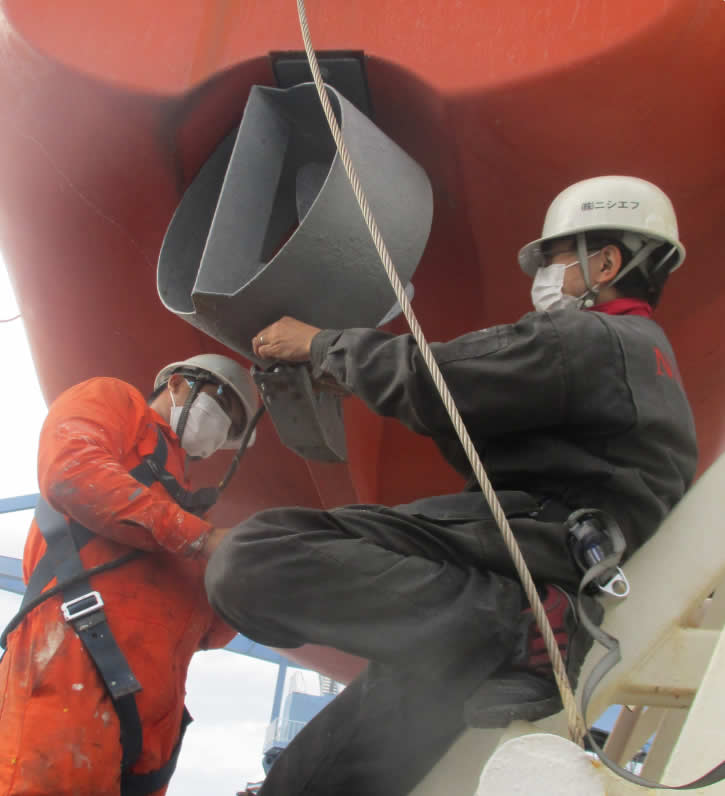
Maintenance
In response to the implementation of MSC.1/Circ.1206, we have assigned lifeboat inspectors to major domestic sites to conduct domestic inspections of lifeboats made by Nishi-F and the former Ishihara.
An FRP shipyard that can be proud of complying with global standards of safety
There are more than 200 companies around the world that have been accredited to service our lifeboats in accordance with MSC.1/Circ.1206, 1277. Once a year, we conduct proper inspections and carry out proper maintenance of our products, which serve as veritable lifelines in marine environments that are often unforgiving and harsh and thereby contribute to maritime safety. At the core of our approach to engineering lies a desire to live up to expectations. Feel free to ask any questions you may have regarding the annual and five-year inspections, maintenance, and servicing of lifeboats to be performed by manufacturers in accordance with the IMO rules. We provide a wide range of support for maritime safety, examples of which include the supervision of domestic and overseas inspections, technical support for the installation of parts, and training with respect to safety equipment given to management companies.
Basic design / shipping / hull / parts repair / regular inspections / compliance with new IMO rules / development of new technologies / sales of related parts / issuance of original statements by manufacturers

Education
We sponsor lectures and seminars on legal knowledge, maintenance techniques, work management, and other relevant topics needed to perform inspections at the same level as the national safety inspections.
Education for mechanics
Domestic service network
We offer a training curriculum to impart a high level of knowledge and skills to our future inspection partners. Popular with participants from overseas are the opportunity to free fall from boats and the ability to engage in training with actual equipment in ways that are feasible because we are the manufacturer of these products.
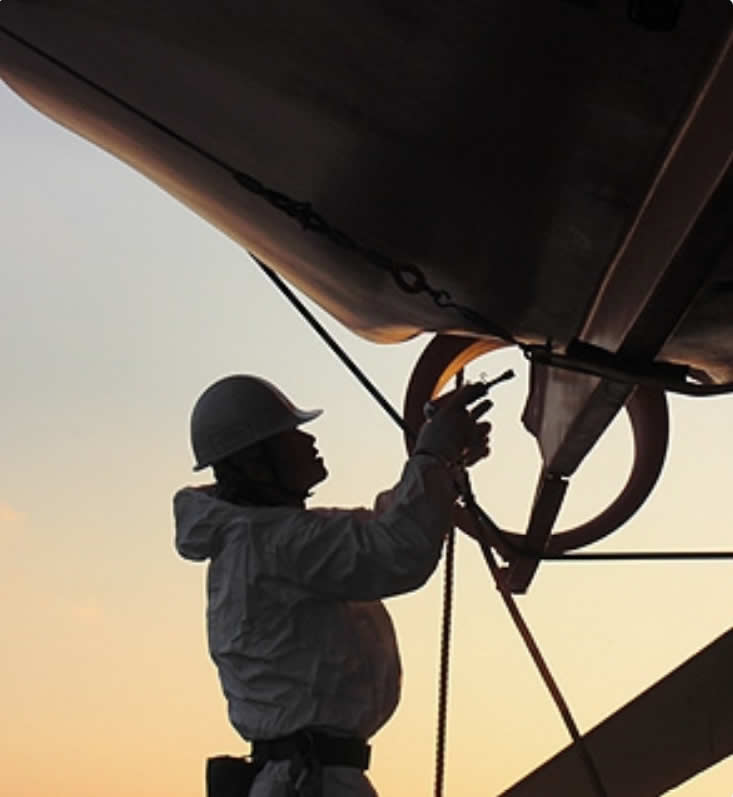
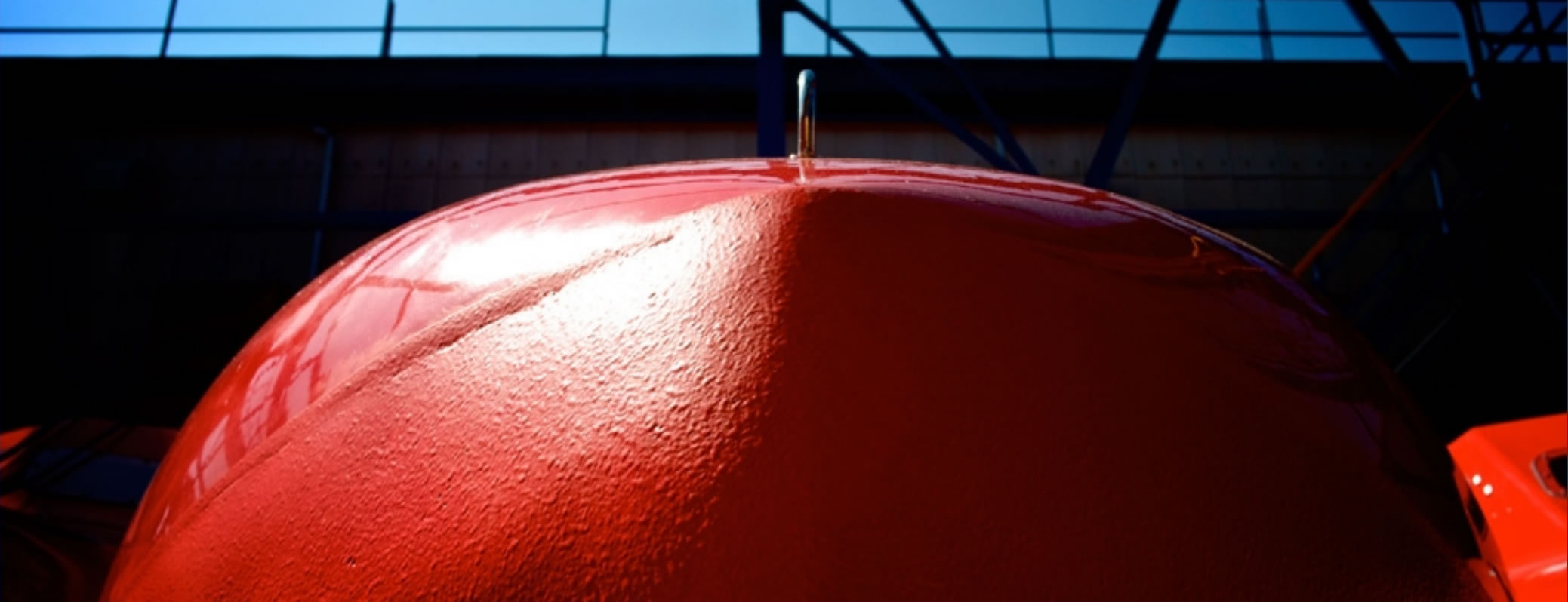
Parts supply
Pre-purchasing to facilitate safety management
We promptly supply hooks, cables, helms, rudders, and other parts to sites where time is of the essence in cases in which the failure to provide such parts could otherwise cause a ship to stop working and in which parts should be pre-purchased to facilitate safety management even though such action is not directly related to the rules.
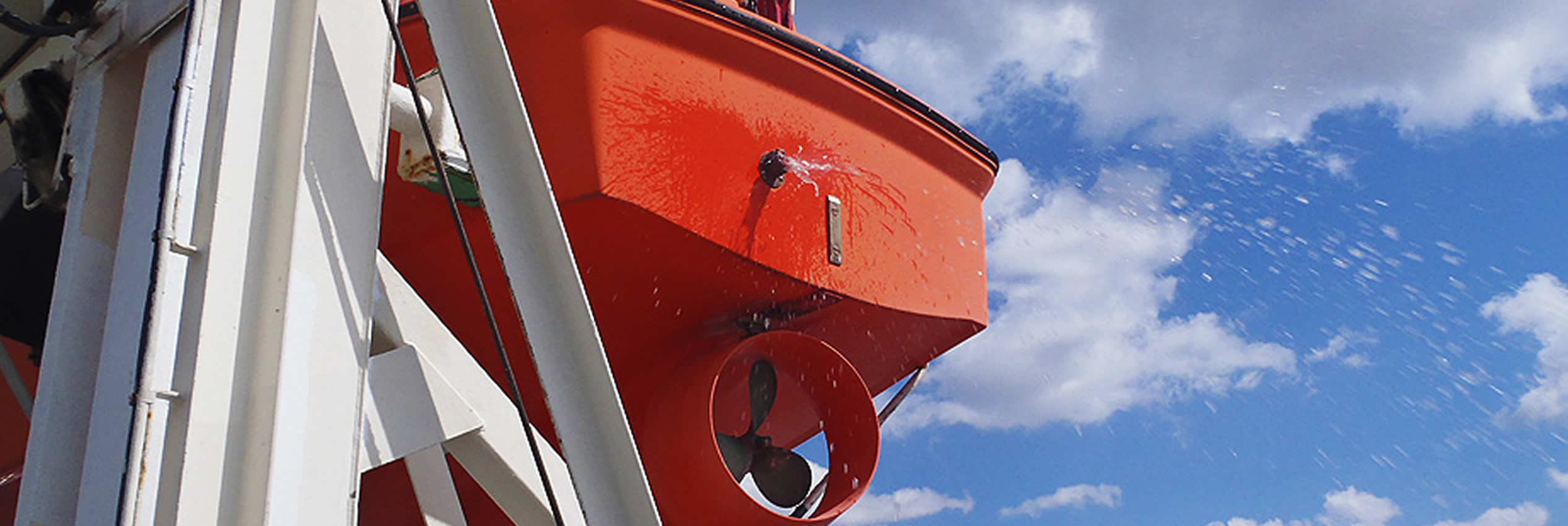
Fall Preventer Devices (FPDs)
FPDs that prevent people from falling from lifeboats (NFPD)
Fall Preventer Devices
MSC.1/Circ.1327 countermeasure product. NFPD protects human life. Developed through the pursuit of lifeboat safety, our FPD (NFPD) is the first product in Japan to comply with international standards. Rather than consisting of reinforced single-point shackles or slings, our NFPD was designed with an emphasis on imparting strength and durability to an integrated product. It is a fall preventer device that is intended to provide real safety at sites of use. A product that not only complies with the rules but also protects human lives was conceived.
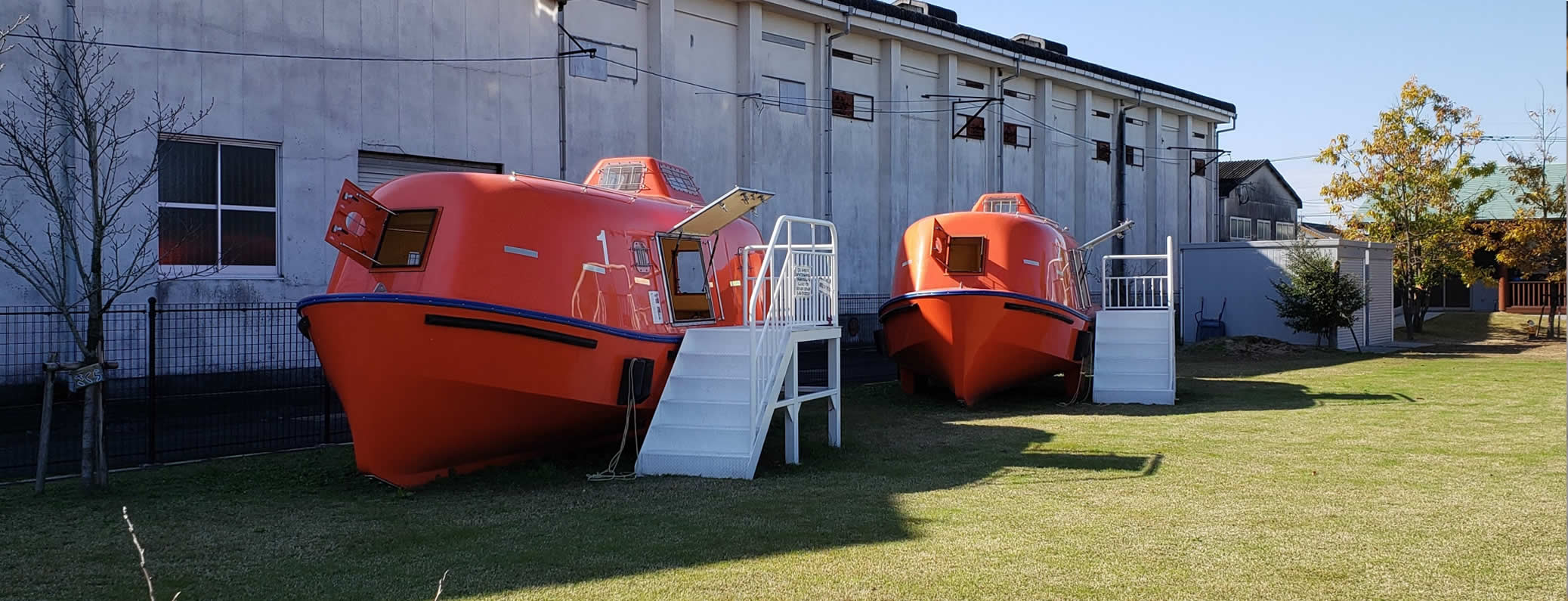
Community shelters
We have been producing lifeboats since 1974.
At least 3,500 vessels equipped with our lifeboats are currently in service worldwide.
Community shelters
The interior of our shelter is covered with a proprietary cushioning material to protect passengers from swaying and impacts. These shelters have also been designed to always return to an upright position even after they have been flipped over 180 degrees. Even in the unlikely event that water seeps into the interior of a shelter, the shelter will reliably maintain its upright position without sinking. Disaster prevention drills are proactively carried out at a local primary school (with a total enrolment of twenty students). We invited these students to participate in a boat-boarding exercise as part of their visit to a local company. Two shelters have been delivered to the Sazanka Daycare Center. Masstrading became a distributor in Shizuoka and Aichi prefectures and purchased a shelter to serve as a model shelter when engaging in sales activities directed at government offices.
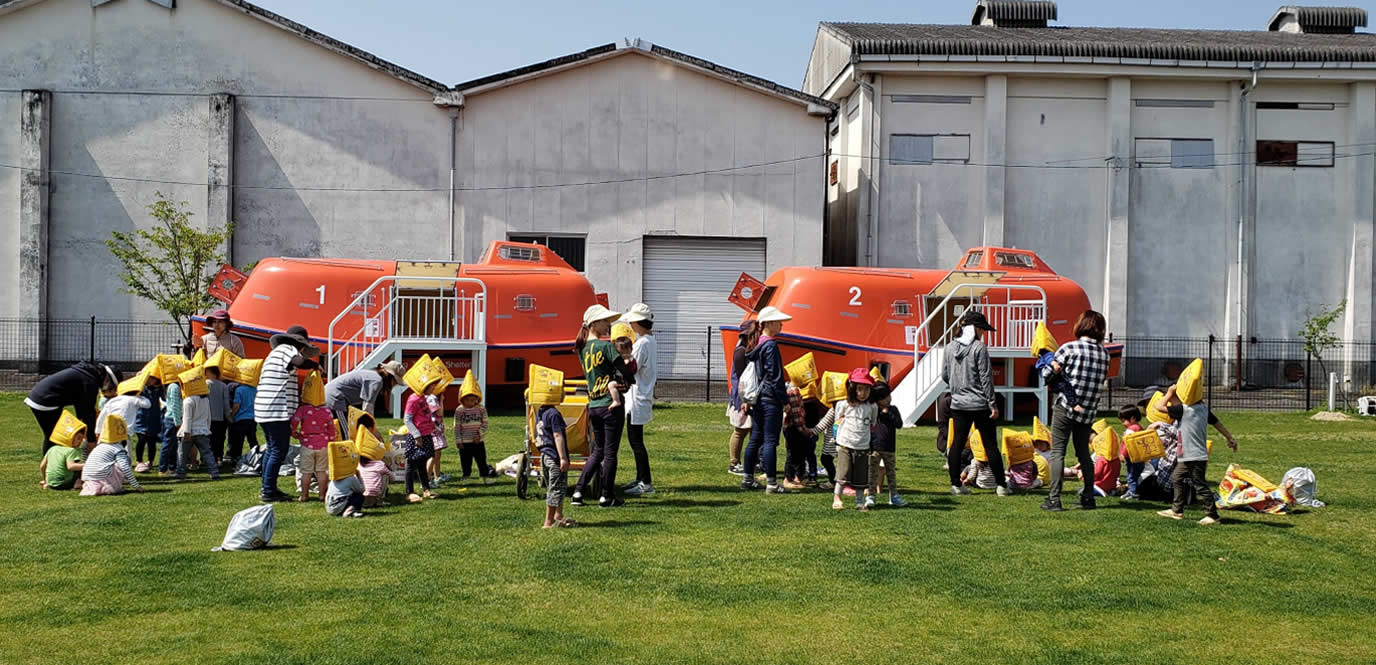
We have been producing lifeboats since 1974. At least 3,500 vessels equipped with our lifeboats are currently in service worldwide (which is equivalent to more than 7,000 lifeboats). There is only one other company manufacturing lifeboats in all of Japan (Shigi Shipbuilding in Sakai, Osaka). We began leveraging our extensive experience with lifeboats to develop evacuation shelters for use in the event of a tsunami before the Great East-Japan Earthquake struck on March 11, 2011, and were the first to install one in Japan. We are also working on a technical study for the production of a guideline for tsunami lifeboats, which is being spearheaded by the Shikoku District Transport Bureau, and we believe that these lifeboats will attract more and more attention in the future.
Overview of a tsunami evacuation shelter
- Key dimensions 6.5m(L) x 2.6m(W) x 2.8m(H)
- Capacity 25 adults (assuming each weighs an international standard 82.5 kg)
- Structure Double-shell fiber-reinforced plastic (FRP) structure. Filled with urethane buoyancy foam for an unsinkable structure. Large fenders are mounted around the entire perimeter to cushion against collisions with building structures and floating debris.
-
Other details
It is estimated that a shelter can stay afloat for seven days.
The bottom of the vessel is shaped to point the bow in the direction of the tsunami. The volume of the storage unit is sufficient to accommodate any expected increase in the number of goods to be brought aboard in the future.
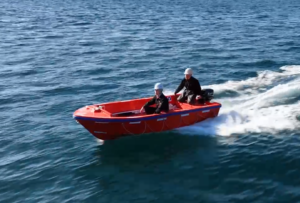
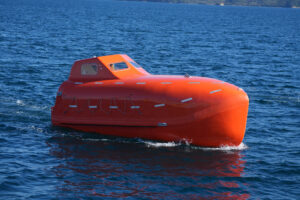
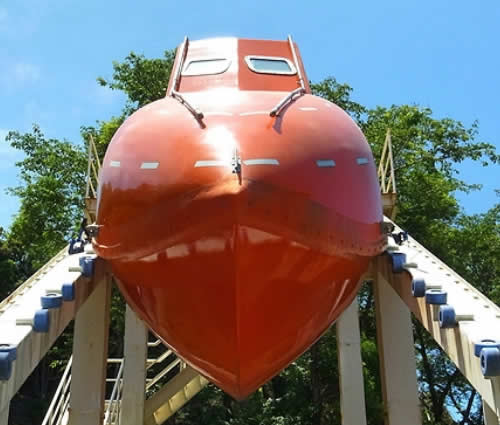
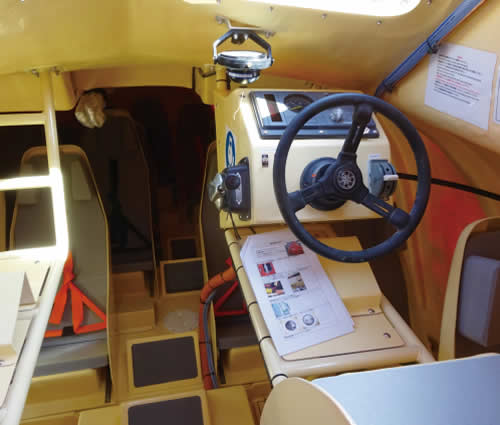
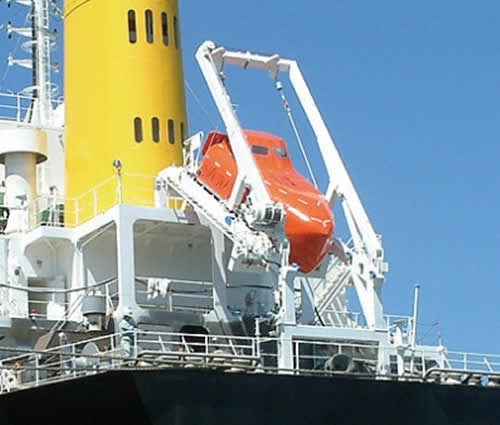

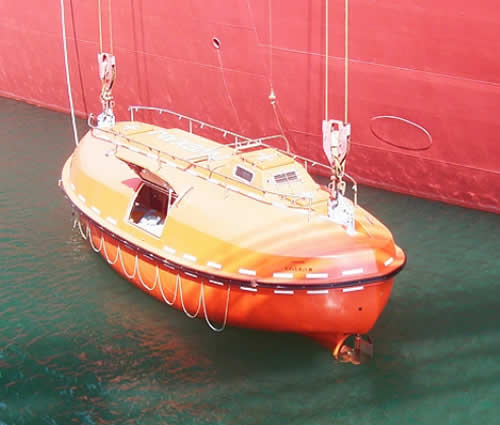
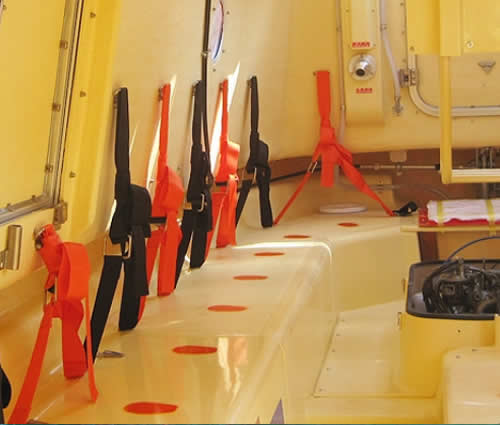
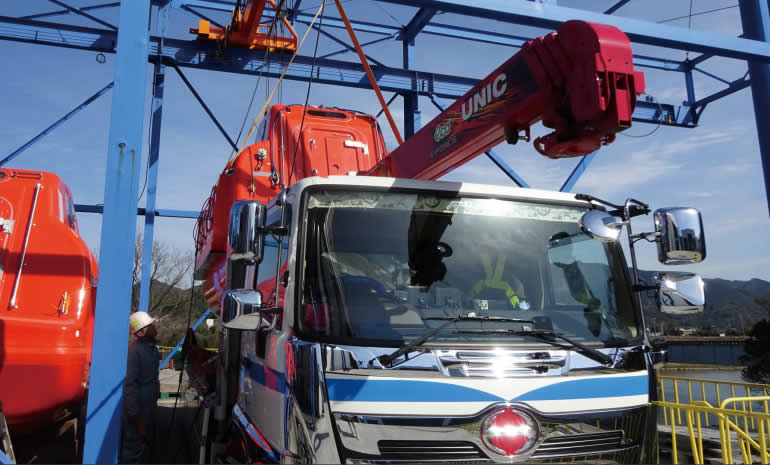
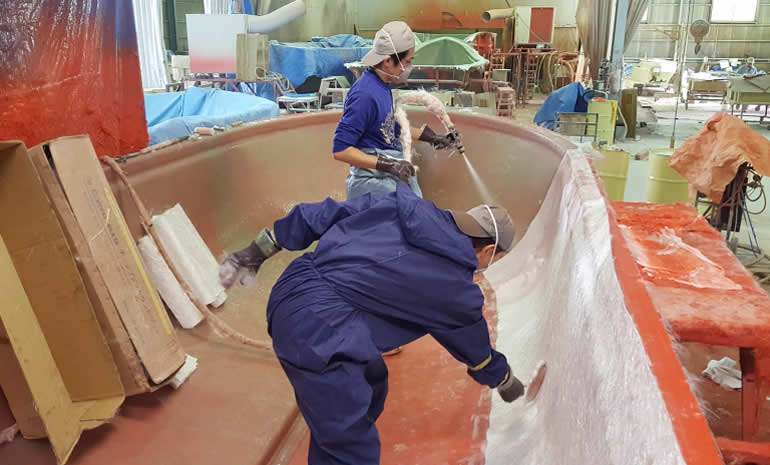

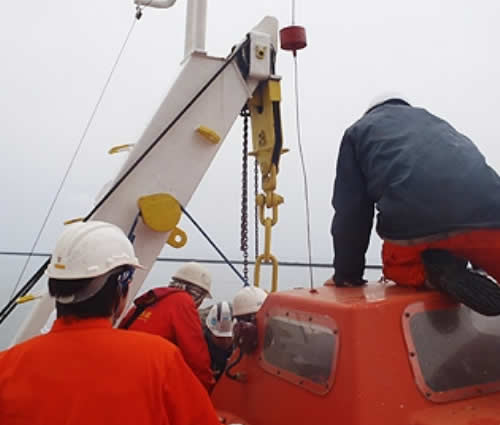
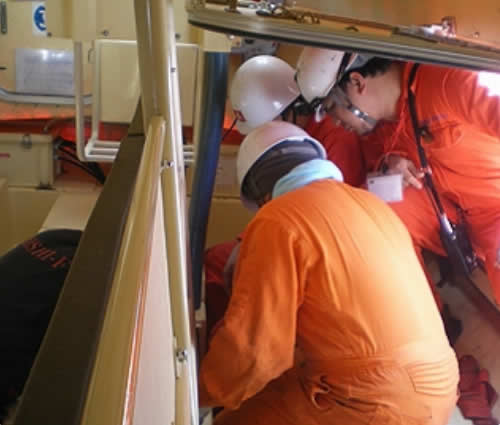
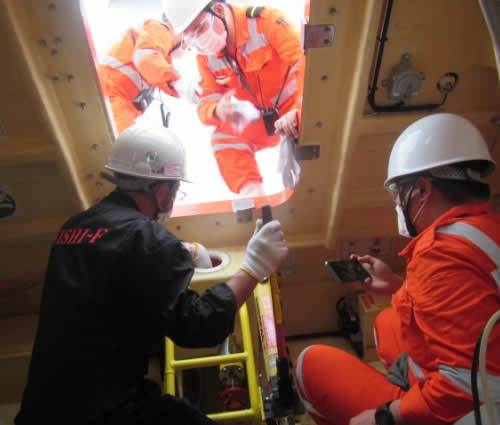
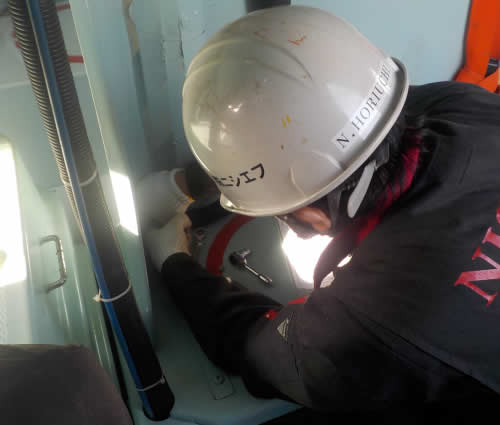
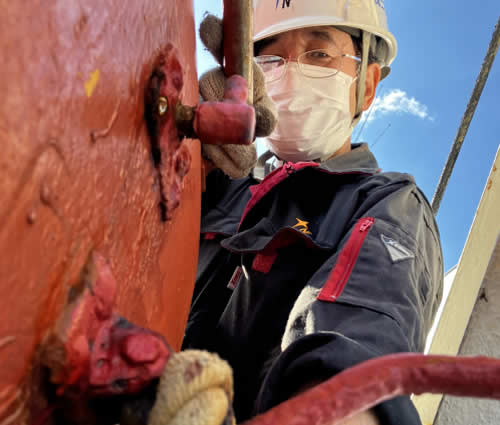
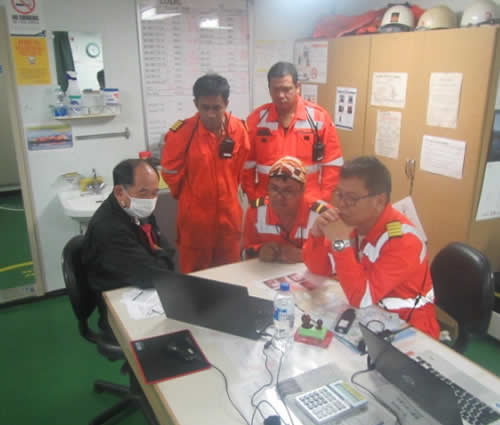
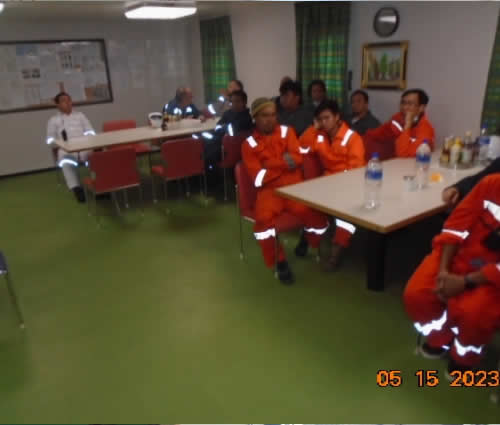
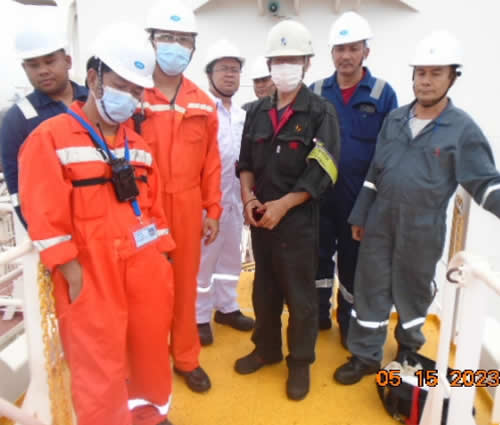
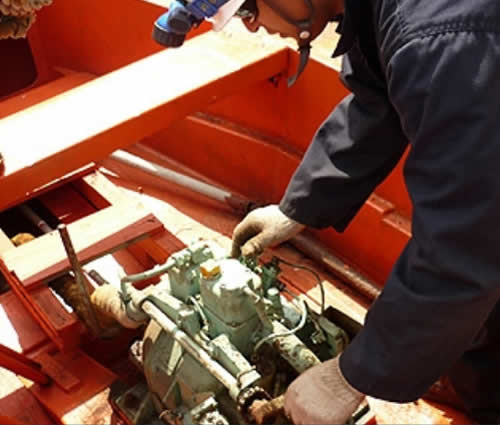
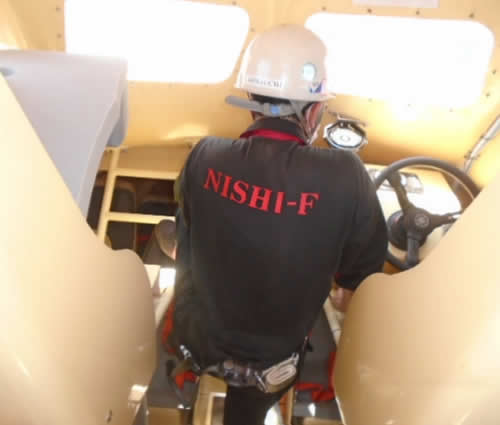
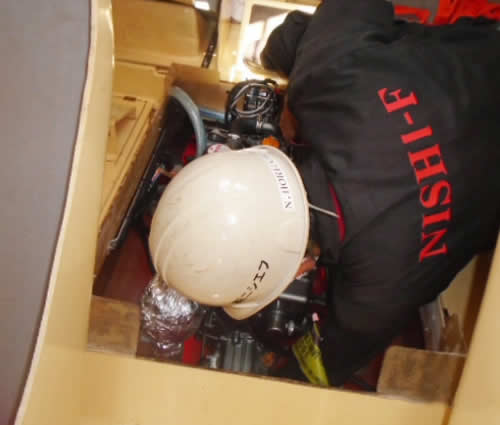
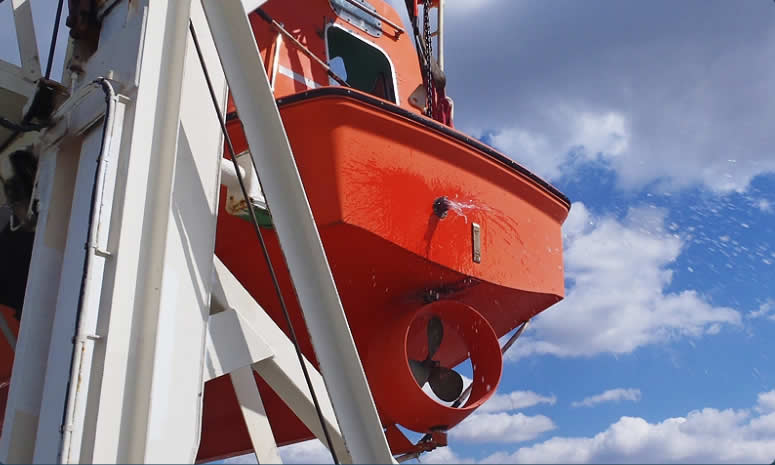
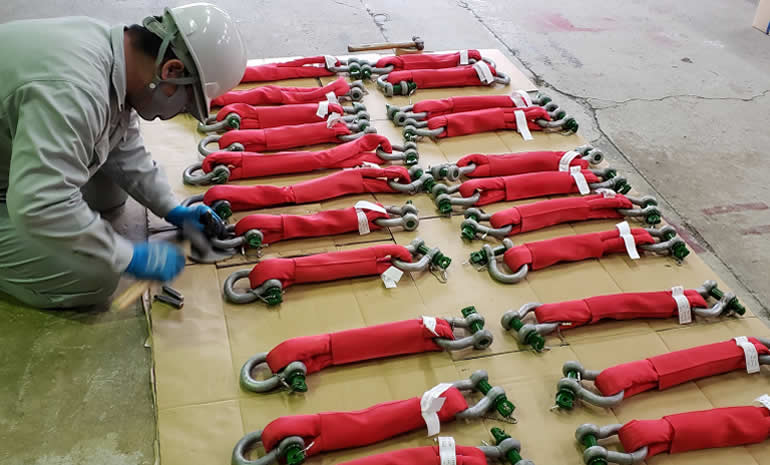
We not only manufacture lifeboats but also inspect and maintain our own lifeboats in accordance with the SOLAS rules as set forth by the International Maritime Organization (IMO). Working within a properly developed program, experienced staff members inspect and maintain lifeboats. We also educate crew members by providing them with instructions on the use of our lifeboats and other pertinent information in a way that could only be done by a domestic manufacturer.
Horiuchi, Sales Div.